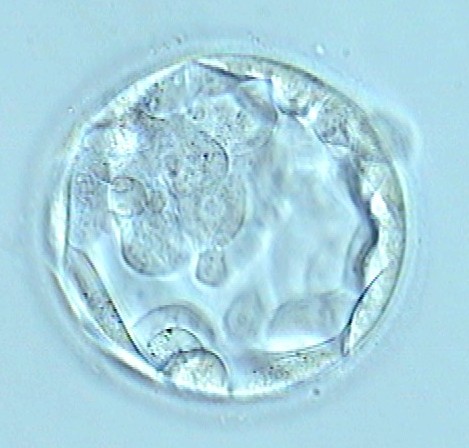
Embryo transfer on day 3 or day 5. The pros and cons.
Determining the ideal day for embryo transfer has always been a controversial issue and there are, even today, still a number of doubts surrounding this issue.
Embryo culture is, basically, a selection process. Each embryo’s progress is evaluated throughout and a decision is taken on which is most likely to implant successfully.
If selection is clear due to a low number of good quality embryos, transfer can take place early. For example, on days 2 or 3.
Alternatively, we might be faced with a cohort of top quality embryos on day 3 with over 3 embryos of excellent quality. If transfer is carried out at this point, selection may be down to chance and embryos that will not prosper may indeed be selected. But, why would embryos stop developing?
On day 2 or 3, the embryo undergoes its first division processes. At this point, the embryo’s potential depends on oocyte quality since it is still early for gene expression processes to begin. As of day 3, the embryo has its own entity and can continue on to blastocyst stage or stop developing. In these cases, waiting until day 5 is a very reasonable option so that the embryos with the greatest chances can be selected.
Does extending embryo culture stop embryos from developing because they’re not in the uterus?
This is one of the greatest fears and it depends, to a large extent, on the IVF laboratory. At Instituto Bernabeu, we have extensive experience in prolonged cultivation processes. The combination of the means for culture used and the conditions it is carried out in, gives us a high blastocyst formation rate of around 60% or above. In egg donation, it can reach 70%. By cultivating until day 5, we obtain embryos that truly have the ability to develop and avoid futile attempts at transfer on day 3 of embryos that are destined to stop developing. We reduce, therefore, the time needed in order to achieve a pregnancy.
As well as embryo selection, transfer on day 5 has another advantage, which is embryo-endometrial synchrony. The endometrial window for implanting is limited. If we are able to bring embryo development and endometrial receptivity closer together, we can increase embryo implantation rates.
Another fear is if blastocysts will survive freezing. Thanks to vitrification (freezing), this fear is unfounded. Blastocyst survival reached 95%, a similar survival rate to that found in other embryo states.
If we look now at embryo biopsies, carrying this out on day 5 has many advantages in comparison to doing so on day 3. In the first instance, only the embryos that actually reach the blastocyst stage will be biopsied. On the other hand, by carrying out a biopsy on trophoectoderm cells, we can get a larger number of cells without risking embryo viability. Remember that on day 3 only one or two at the most, cells can be taken while, on day 5, this reaches 4 or 5 cells. Therefore, the greater the genetic material, the more reliable the diagnosis.
In short, embryo culture until day 5 is a complex process that helps to improve selection of embryos for transfer and thus minimises the number of embryos transferred, avoiding twin pregnancies and achieving good results throughout the pregnancy. Even so, in those cases where additional embryo selection is not necessary, early transfer, on day 3, is a reasonable alternative that leads to a quality transfer.
Personalising treatment is, therefore, key in helping us to achieve our aim which is to BRING A HEALTHY CHILD INTO THE WORLD.
Dori Rodríguez PhD, biologist at Instituto Bernabéu
To found out the next topics for our forum: follow us on facebook.
You can arrange an online consultation or book an appointment at Instituto Bernabeu.
More information on our website: www.institutobernabeu.com or www.ibbiotech.com
